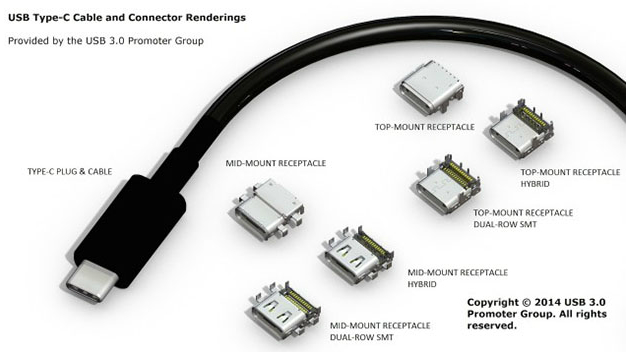Windows 10 to launch with support for USB 3.0 successor
WinHEC Hardware Conference

Microsoft's conference agenda hints that Windows 10 may come with support for new USB standards on laptops, tablets, and phones. The Windows 10-maker has updated its WinHEC conference website to include a session discussing how new USB Dual Role and Type-C connectors will play a role in its next generation operating system.
"Windows 10 introduces support for USB Dual Role and Type-C, which will enable new wired connectivity scenarios such a phone interacting with USB peripherals, or laptops connecting to an external display using the USB Type-C connector," Microsoft said.
The technologies could allow for even thinner devices with more wired connectivity options.
USB Dual Role
As Microsoft is positioning Windows 10 for phones to be a portable and mobile solution with the power of Windows 10 in your pocket, USB Dual Role allows users to connect peripherals on their phones for maximum productivity. The functionality of USB Dual Role will be similar to USB on-the-go (OTG) capabilities on competing phones, like the Samsung Galaxy Note 4, running the rival Android operating system from Google.
With USB Dual Role, not only will users be able to charge their smartphones running Windows 10 for phones, they can also connect devices like a flash drive, keyboard, mouse, or even external hard drive to the port. This allows the phone to be used as a host.
USB Type-C
The USB Type-C connector allows for reversible USB cables, similar to Apple's new Lightning cable for the iPhone. The primary convenience, if you're charging a smartphone, is that you can blindly plug in the cable to your phone without having to worry about which end of the connector tip should face up like you need to today with micro USB.
Running on the USB 3.1 specifications, USB Type-C will also support faster data transfer speeds. Consumers and enterprise users will be able to copy and move files quicker using USB Type-C flash drives, for example. According to the specs, USB 3.1 will support up to 10GBps transfer speeds, double the 5Gbps maximum from USB 3.0.
Sign up to the TechRadar Pro newsletter to get all the top news, opinion, features and guidance your business needs to succeed!
Additionally, users can use USB Type-C and USB 3.1 as a video output port. The current limitation with smaller tablets, like the 8-inch Lenovo Yoga Tablet 2 that we recently reviewed, is that devices come with just a micro USB port to keep the tablet slim and light. To connect a flash drive, you'll need a USB OTG adapter and there is no wired way to mirror your display.
With USB 3.1, a Type-C port could allow slim, small tablets like the Yoga Tablet 2 to come with one do-it-all connection for charging, connecting peripherals, and outputting video to a larger screen.
Apple is also rumored to be working on a new ultra-slim MacBook Air with a single USB Type-C port. If the Apple rumor mill is accurate, Apple may be leveraging the power of USB 3.1 to replace the standard USB 3.0 port, MagSafe charging port, and video-out via Thunderbolt.